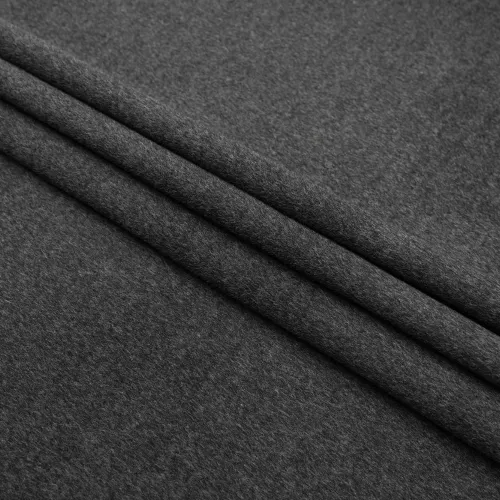Transforming Stock Fabrics into Unique Textile Creations
The world of textile manufacturing has evolved significantly, offering innovative solutions that bridge the gap between immediate availability and personalization. Ready stock fabrics customization has emerged as a game-changing approach for fashion designers, manufacturers, and businesses seeking to balance quick turnaround times with unique product offerings. This comprehensive guide explores the possibilities, methods, and creative potential of customizing ready stock fabrics.
Understanding the fundamentals of ready stock fabric modification opens up endless possibilities for creating distinctive designs while maintaining cost-effectiveness and efficient production timelines. From small boutique operations to large-scale manufacturers, the ability to customize stock fabrics has revolutionized how businesses approach textile sourcing and product development.
Understanding Ready Stock Fabric Customization Techniques
Surface Treatment Methods
Ready stock fabrics can undergo various surface treatments to achieve unique appearances and textures. Digital printing, screen printing, and heat transfer methods allow for intricate pattern applications and color modifications. These techniques can transform basic stock materials into custom-designed fabrics that perfectly align with specific project requirements.
Advanced surface finishing techniques, including embossing, flocking, and burnout processes, provide additional customization options. These methods can create raised patterns, velvet-like textures, or selective fabric transparency, enhancing the original material's aesthetic appeal and functionality.
Dyeing and Color Modification
Color customization represents one of the most popular methods for personalizing ready stock fabrics. Whether through piece dyeing, yarn dyeing, or specialty dye processes, manufacturers can modify stock materials to match exact color specifications. The development of eco-friendly dyes and precision color-matching technologies has made this process more sustainable and accurate than ever before.
Different fabric types respond uniquely to dyeing processes, creating opportunities for diverse effects and finishes. Natural fibers typically accept dyes readily, while synthetic materials may require specialized treatments or dye formulations to achieve desired results.
Advanced Customization Possibilities
Structural Modifications
Beyond surface treatments, ready stock fabrics can undergo structural modifications that fundamentally alter their characteristics. Techniques such as brushing, sueding, and calendering can change the fabric's texture and hand-feel. These processes can transform standard materials into premium-looking and feeling textiles suitable for high-end applications.
Chemical treatments can also modify fabric properties, enhancing performance characteristics such as water resistance, flame retardancy, or antimicrobial properties. These modifications expand the potential applications of stock fabrics while meeting specific industry requirements.
Embellishment and Detail Work
Adding embellishments to ready stock fabrics creates unique design elements that set products apart. Techniques including embroidery, appliqué, and beading can transform basic materials into elaborate, decorated textiles. Modern technology allows for precise, automated embellishment applications that maintain consistency across large production runs.
Laser cutting and etching provide additional customization options, enabling intricate pattern creation and controlled fabric degradation effects. These techniques can create everything from delicate lace-like patterns to bold, graphic designs.
Sustainability and Cost Considerations
Environmental Impact
Customizing ready stock fabrics often presents a more sustainable alternative to creating entirely new materials. This approach reduces waste, minimizes water consumption, and typically requires less energy compared to manufacturing fabrics from scratch. Many modern customization techniques also incorporate eco-friendly materials and processes, further reducing environmental impact.
The ability to modify existing stock also helps reduce inventory waste, as materials can be adapted to meet changing market demands rather than becoming obsolete. This flexibility supports sustainable business practices while maintaining design innovation.
Economic Benefits
Ready stock fabric customization often provides significant cost advantages compared to custom fabric production. Lower minimum order quantities, reduced lead times, and decreased development costs make this approach particularly attractive for small to medium-sized businesses. The ability to modify existing materials also allows for quick response to market trends and customer demands.
While some customization techniques require initial investment in equipment or expertise, the long-term benefits typically outweigh these costs. The versatility of modified stock fabrics can lead to increased product offerings and market opportunities.
Frequently Asked Questions
What types of ready stock fabrics are best suited for customization?
Most ready stock fabrics can be customized, but natural fibers like cotton, silk, and wool typically offer the most versatile customization options. Synthetic materials can also be modified, though they may require specific techniques or treatments for optimal results.
How long does the customization process typically take?
Customization timelines vary depending on the chosen technique and quantity. Simple processes like digital printing might take a few days, while more complex modifications involving multiple steps could require several weeks. However, this is still significantly faster than producing custom fabrics from scratch.
What minimum quantities are required for ready stock fabric customization?
Minimum order quantities for customization are generally much lower than those required for custom fabric production. While requirements vary by supplier and technique, many services offer minimums as low as 5-10 yards for certain customization options, making it accessible to smaller businesses and individual designers.

